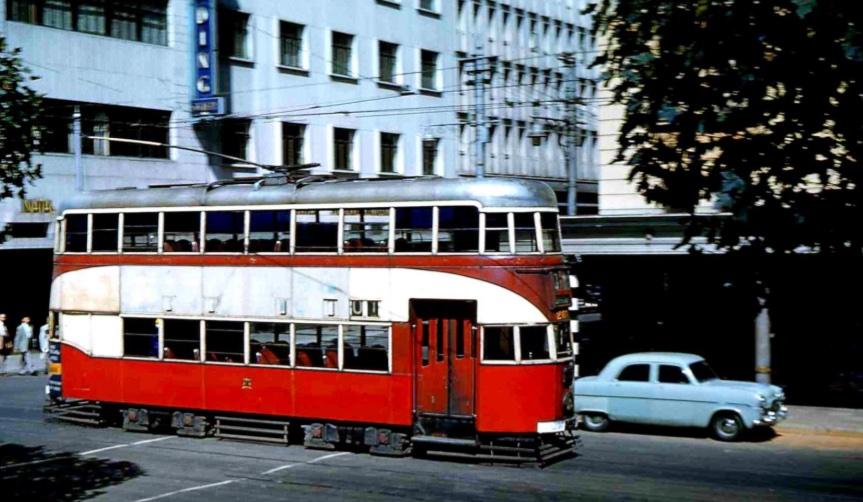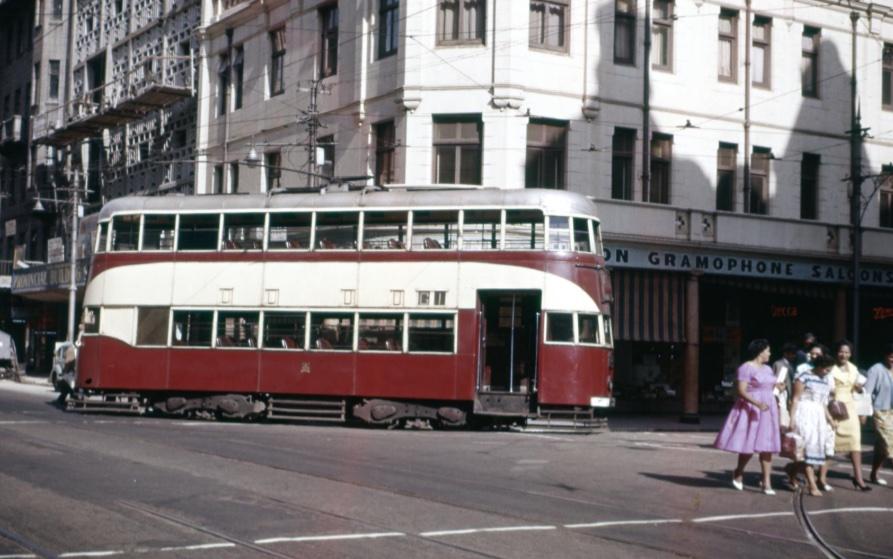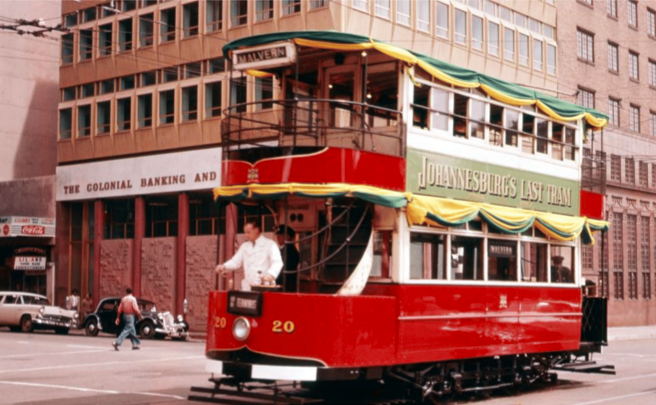
Disclaimer: Any views expressed by individuals and organisations are their own and do not in any way represent the views of The Heritage Portal. If you find any mistakes or historical inaccuracies, please contact the editor.
In 1936, Johannesburg hosted the British Empire Exhibition and for this illustrious major event, the JMT – Johannesburg Municipal Tramways, ordered 50 modern trams from Metropolitan Cammell in Birmingham, England. These streamlined double-deck trams represented the last word in modern tramcar design. Seating was provided for 32 passengers on the lower deck and 44 upstairs – total 76. Standing capacity also allowed for another 16 passengers.
These trams initially entered service between the city centre and Milner Park Showgrounds. After the closure of the Exhibition, they were used on all JMT routes except Crown Mines.
The trams quickly became a familiar sight on Johannesburg’s streets, their distinctive streamlined appearance marking a new era in public transportation for the city. Residents appreciated the enhanced comfort and efficiency these British-built vehicles offered, and their reliability helped improve daily commutes for thousands of passengers. The main image above shows one of the new trams in the tram shed.
Trams at the Malvern terminus, east of the city
Streamliner in Market Street
Streamliner turning from Market into Loveday Street
Streamliner tram in Market Street
Unfortunately, advertising was in later years, applied to JMT trams and buses. This was for me an eyesore, spoiling the clean livery of earlier times.
The streamliners were delivered with tinted upper-half windows, which were ideal for the hot summer months of the year.
As a Johannesburg-born resident, I can recall the ultra-smooth ride that these modern trams provided – much smoother than the earlier “rattlers” that preceded them!
By 1953, their steel bodies were experiencing rust and corrosion problems and as a result by 1960, they were just a memory in Johannesburg. Five of them were pressed into service in 1961 to accommodate the high volume of passengers on the day of the final ceremonial run of trams in Johannesburg.
Johannesburg's last tram
Streamliner No.214 was preserved in the James Hall Transport Museum in Pioneer Park, Johannesburg. One can only hope that it and the Museum as a whole, has survived the changing heritage environment in South Africa in recent decades.
The last tram is preserved in the James Hall Transport Museum
Les was born in a private house in Brixton on July 7, 1935. He attended Twist Street Primary School from 1946 to 1948, after returning from Durban where he spent 3 years during World War II when his dad was in the Army. He attended Parktown High and after that, he started his working life for the CNA in their Fancy Goods Department. Les then trained as a window dresser with Jacoby & Co in Kerk Street where he remained for 15 years of his working life. All this time, his heart was in railways and he had made a private study of the SAR's steam locomotives and other rolling stock - especially dining cars. This led to an invitation from the SA Railway Administration to join the SA Railway Museum as Assistant Curator in July 1972. He was overjoyed at this development and remained in their employment for the remaining part of his working life. During this time, SA Transport Services published his book on the history of all catering vehicles used on the SAR - dining/kitchen/lounge cars etc. He was boarded on pension in 1989.
References
- "Johannesburg Tramways” by Tony Spit.
- “Tramway Systems of Southern Africa” by W.D.Howarth.
Comments will load below. If for any reason none appear click here for some troubleshooting tips. If you would like to post a comment and need instructions click here.






